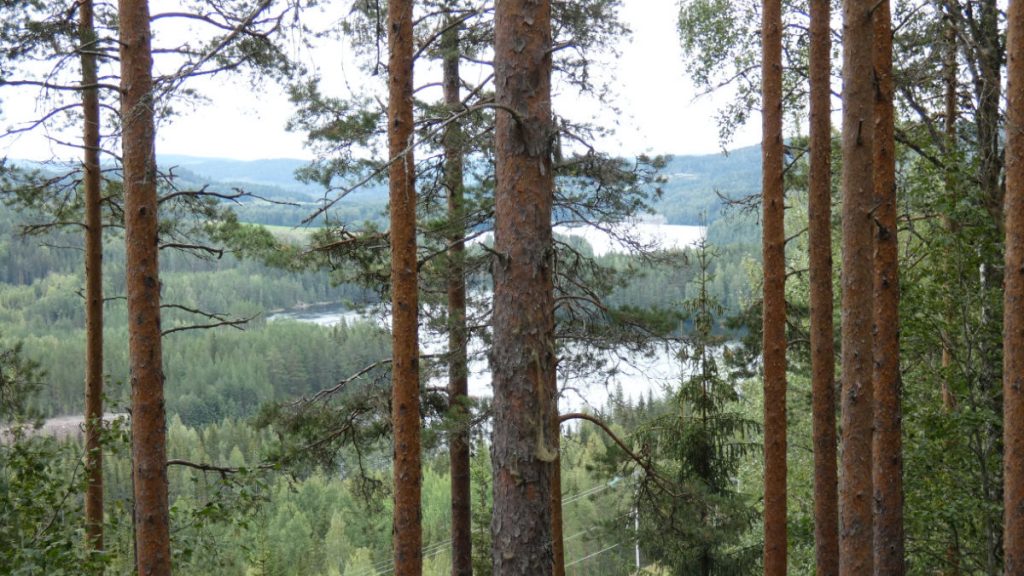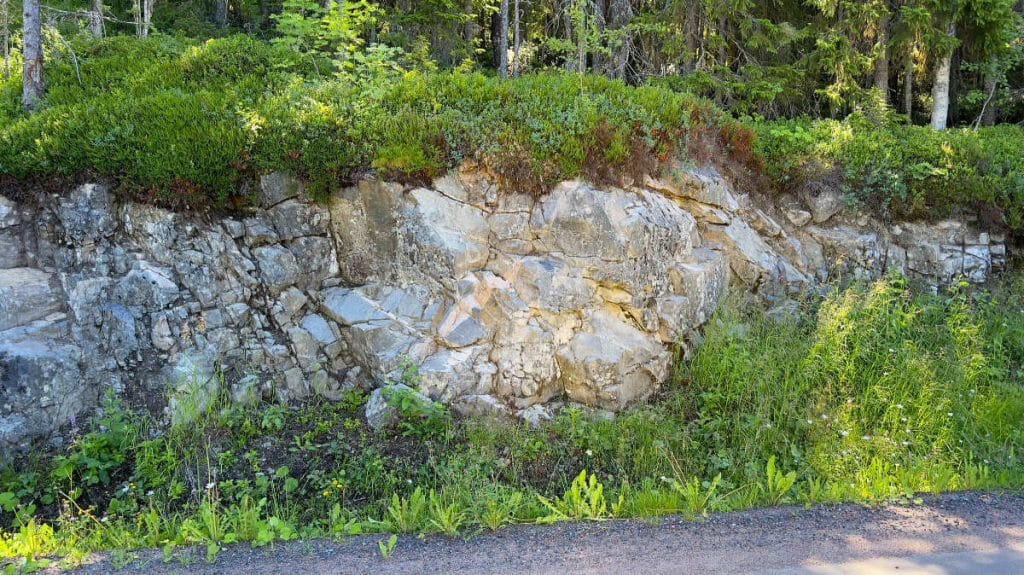Getryggen
Ridge formed by ice river material
Högt uppe på Getryggen vandrar du på slingrande stigar med bitvis fin utsikt över Indalsälven. Denna åsrygg bildades för drygt 10 000 år sedan när senaste inlandsisen smälte, men vid en tidpunkt då isavsmältningen tog en paus och isen stod stilla här ett tag. Smältvatten forsade fram i en tunnel genom isen och lämnade efter sig grus, stenar och sand. The shape of the tunnel gave the ridge its name.
Ice-free 10,000 years ago
20,000 years ago the several kilometres thick inland ice covered all the land nowadays defined as Sweden. The ice sheet covering Antarctica will give you an idea of how an inland ice appears.
In due course the ice melted. Geologists are not entirely certain but Ragunda was probably free from ice some 10,000 years ago.

The ice river carried stones, gravel and sand here
At Getryggen the melting ice created an ice river that ran in a tunnel through the ice sheet.
The ice river carried with it not only water but also large masses of gravel, stones and sand. As long as the water ran at high speed large masses of ice river material were transported all the way to the edge of the ice sheet. Heavier particles were deposited near the outlet of the ice river. Sand being a lighter material was bounced ahead.
Stones and gravel landed on the bottom with sand on top
The coarsest material, stones and gravel, was first deposited. All along the melting of the ice and as the ice ridge progressed upstream, lighter material such as sand was deposited on the top.
At one time in this area the deglaciation - the melting of the ice - ceased for quite a while. During this period much melting water flowed, depositing masses of material in one place and that way a major ridge could form.

Loose blocks of ice formed kettle holes and lakes
The area around Getryggen can also demonstrate kettle holes and kettle lakes. Kettle lakes are water-filled kettle holes; they were formed when ice blocks came loose and were embedded in the material that the melting ice had left behind. The material solidified around the block of ice and when the ice then melted, holes - kettles - were formed of the same size as the ice blocks had been.
A kettle hole can also be studied at Fors skogskyrkogård (Fors´ forest cemetery).

More information
Sites to visit on Theme Ice Age
More site photos



Places to visit nearby
Practicalities
Accessibility
See Accessibility.
Activities
Go for a hike up on Getryggen on a 3 km long meandering trail with some fine views over the River Indalsälven. See also Activities in Ragunda.
Eating and drinking
The nearest grocery store, café and eatery are in Hammarstrand. See also Eating and drinking in Ragunda.
Accommodation
Missing on site, but various options are available nearby. See Accommodation in Ragunda.
Getting here
SWEREF 99 TM N: 7 001 738 E: 554 734
WGS84 N: 63,140786° E: 16,085848°



